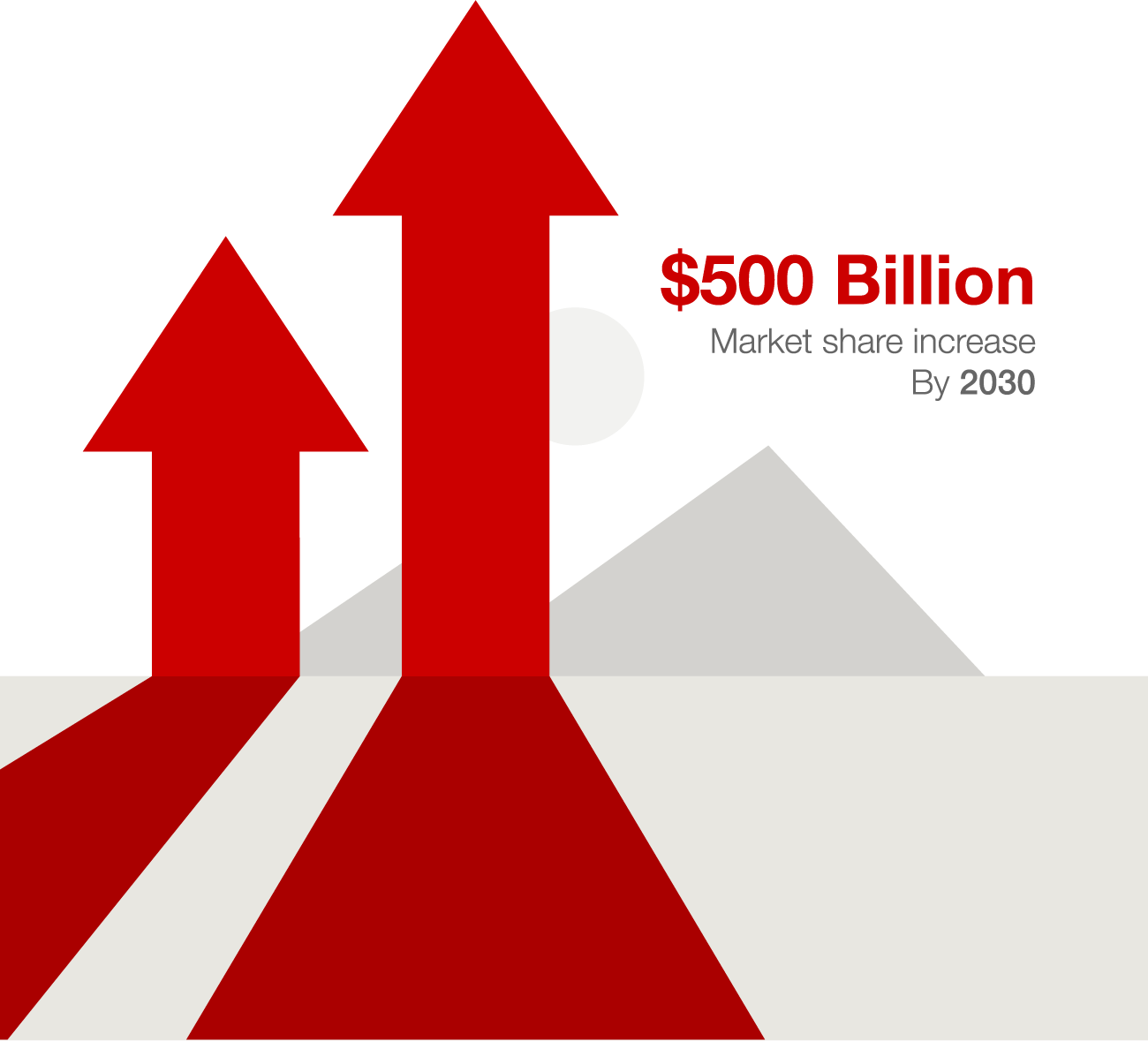Just the beginning: a banking-fintech alliance is the future of payments

Banks and fintech companies are unexpected allies. As businesses continue to integrate digital banking and payments services, banks and fintech companies can collaborate and cooperate to create a robust suite of tech-driven financial services. Ken Gavrity, head of payments at KeyBank, sat down with Nigel Morris, co-founder and managing partner at QED Investors, to talk about the future of the payments space. In the conversation, Morris paints a bright picture of collaboration between banking and fintech companies that will lead to both increased customer engagement and business growth.
Fintech is in its infancy
The fintech industry has already markedly changed banking, and the journey is far from over. “We're in chapter two, not chapter eight, of a fintech revolution,” said Morris. Today, the fintech industry represents only a low single-digit percentage of the $11 trillion insurance and payments business, but there is tremendous growth potential. Since the pandemic, the industry’s growth has been supercharged. “It was Bill Gates who once said, ‘We tend to overestimate how much change occurs in the short term, and underestimate how much change there is in the long term,’” added Morris. “The prediction of when that curve goes geometric is really difficult, but it's moving at a very rapid rate now.”
Some asymmetry exists today between individuals, small fintech companies and incumbent banks, but over the next 10 years, Morris believes that there will be massive breakthroughs in the fintech universe related to credit collars, credit card stripes, squares and the refinement of existing payment models.
Embedded banking is an important node of that fintech revolution. KeyBank has significantly increased its investment in the embedded banking sector due to its growth potential. According to Gavrity, the addressable market share of embedded banking will increase to as much as $500 billion by 2030.

$500 Billion
Market share increase
By 2030
“There aren't many examples in history of valuation and revenue opportunity growing that quickly,” says Gavrity. “If you're a software company and you're not thinking about adding embedded banking into your platform, you're missing revenue opportunities – and you're missing an opportunity to create real customer engagement.”
Customer engagement is the goal
Incumbent banks typically carry significant tech debt, a term used to describe the cost associated with modernizing an existing tech infrastructure. Fintech companies now have a significant value proposition for banks in that they have the innovation and software in place to offset tech debt and create a better product. “Banks are never going to out-innovate the fintechs,” says Morris, adding that successful banks are going to learn to work with fintechs creatively as an emerging partner, and get rid of the ego around being the innovator.
Gavrity says that fintech relationships are particularly beneficial in driving customer engagement. Banks bring money movement, financial experience and risk management services to the table, but fintechs bring client experience—and that is a critically important element. The technology should meet or exceed customer payment expectations and preferences through a variety of payment methods, like point of sale. “The more you can create that stickiness the better,” said Morris. “That’s really powerful.” It also has the secondary benefit of reducing payment debt for the company, because customers are more likely to complete the payment cycle.
Banks realize these benefits most dramatically when fintechs can be integrated into an existing platform, according to Morris. That is, the technology can be spliced into an existing tech stack. “The winners are going to be able to knit together fintechs and their internal technology and join it up,” he said.
What to look for in a fintech relationship
Tapping into these benefits requires pursuing the right relationships with tech companies. Banks should also stick to their wheelhouse. Gavrity says that KeyBank specifically does not try to build tech internally. “We're going to push it through our distribution pipes, because our customers really want it, and mobilize the execution of it,” he said.
When vetting a potential fintech, Morris firsts questions what problem the technology is solving. As an example, he says the firm never heavily invested in the crypto market because he didn’t understand the value proposition or the solution it provides to a current problem. In addition, the company should have a strong foundation; blitzscaling, he says, doesn’t work in the financial services sector.
Gavrity added that banks should pursue a partnership as a long-term endeavor, as they would any other professional relationship that should last for 10 to 20 years. “It has to be coordinated. You have to think about a go-to-market model, where two companies are coming together,” he explains. “Fintechs typically have a real competency in building those channel partnerships.” This includes having conversations and agreements related to risk management, tech maintenance and upgrades, and customer support.
The banking and fintech sectors have collided to provide a better customer experience and improve revenue collection for businesses in all sectors. To discuss how fintech solutions like embedded banking can help drive growth for your business, connect with a payments advisor to learn more.
To learn more
About our industry expertise or to discuss this topic and more as it relates to your business, connect with your relationship manager or KeyBanc Capital Markets investment banker.
For more information on KeyBanc Capital Markets, visit key.com/kbcm
This article has been prepared and circulated for general information only and presents the authors’ views of general market and economic conditions and specific industries and/or sectors. This report is not intended to and does not provide a recommendation with respect to any security.
KeyBanc Capital Markets is a trade name under which corporate and investment banking products and services of KeyCorp® and its subsidiaries, KeyBanc Capital Markets Inc., Member FINRA/SIPC, and KeyBank National Association (“KeyBank N.A.”), are marketed. Securities products and services are offered by KeyBanc Capital Markets Inc. and its licensed securities representatives, who may also be employees of KeyBank N.A. Banking products and services are offered by KeyBank N.A.
Please read our complete KeyBanc Capital Markets disclosure statement.